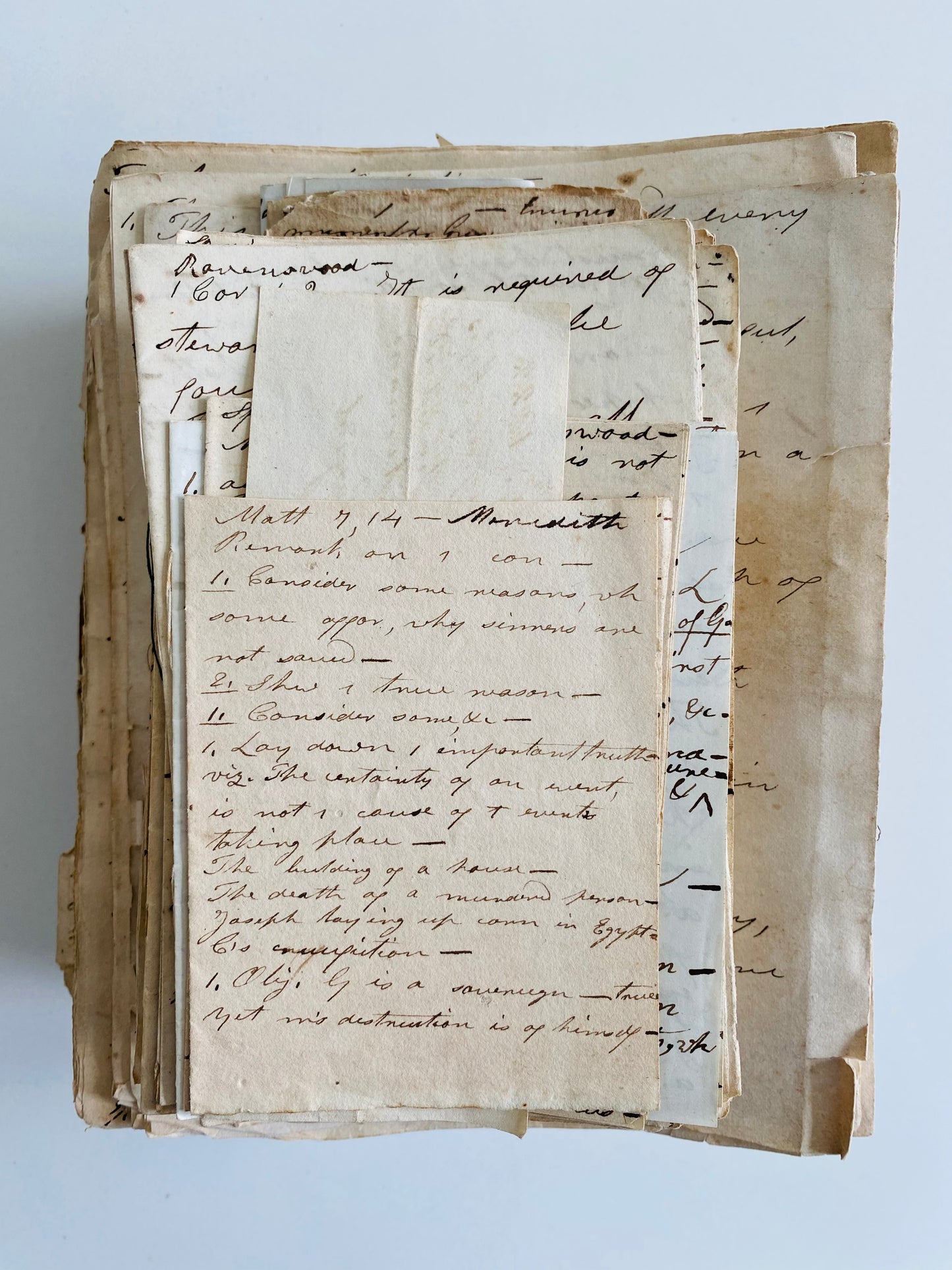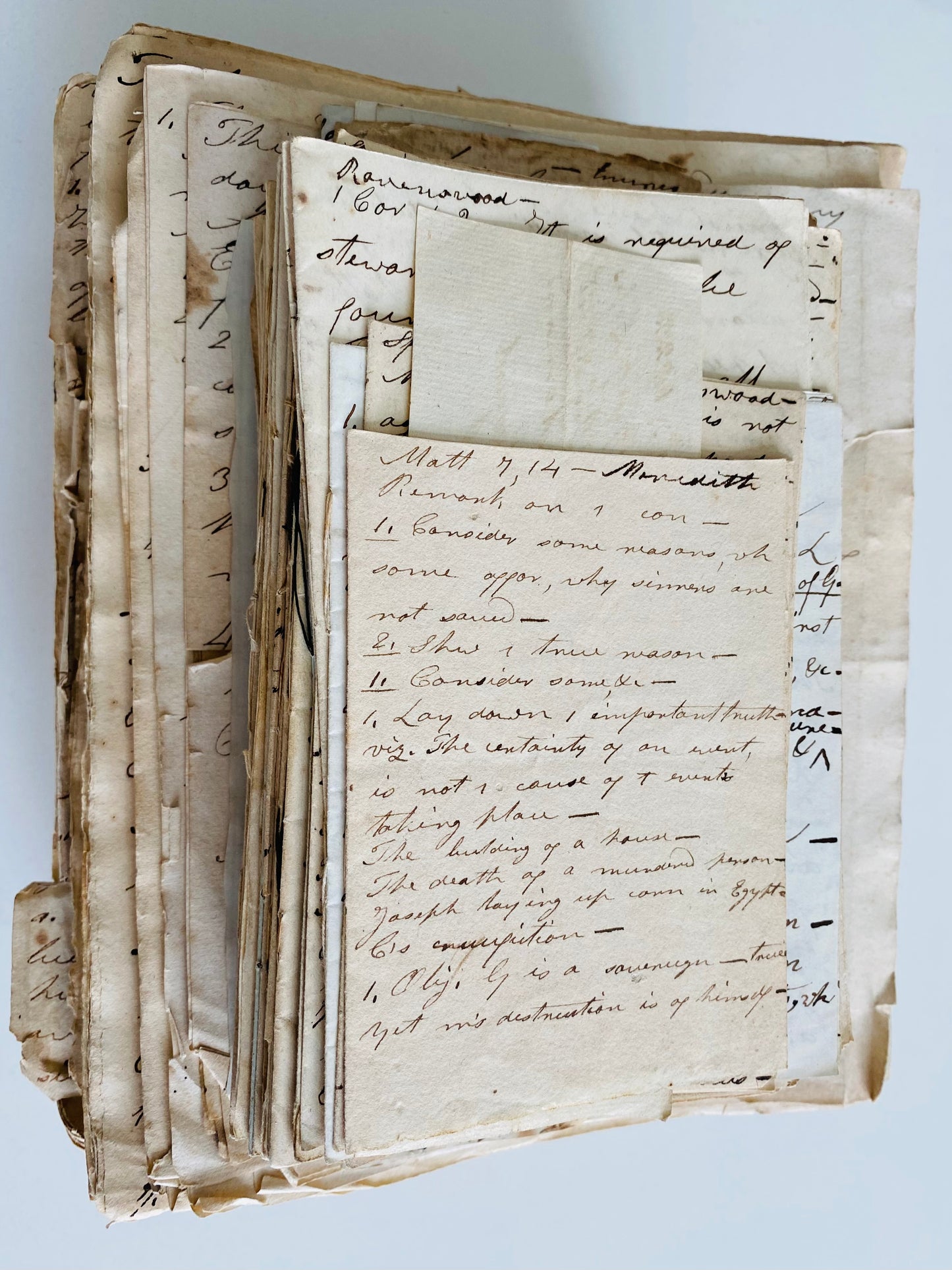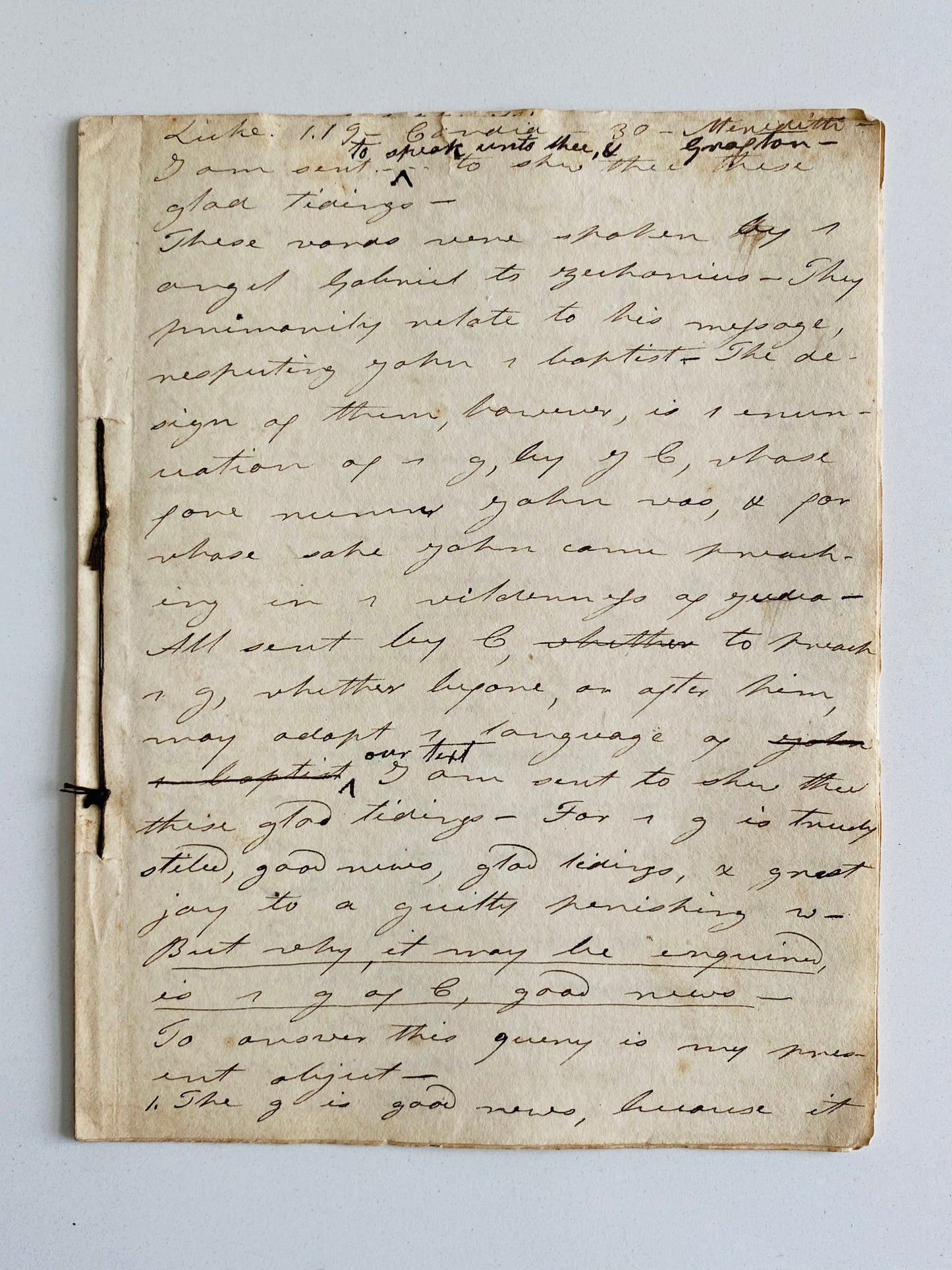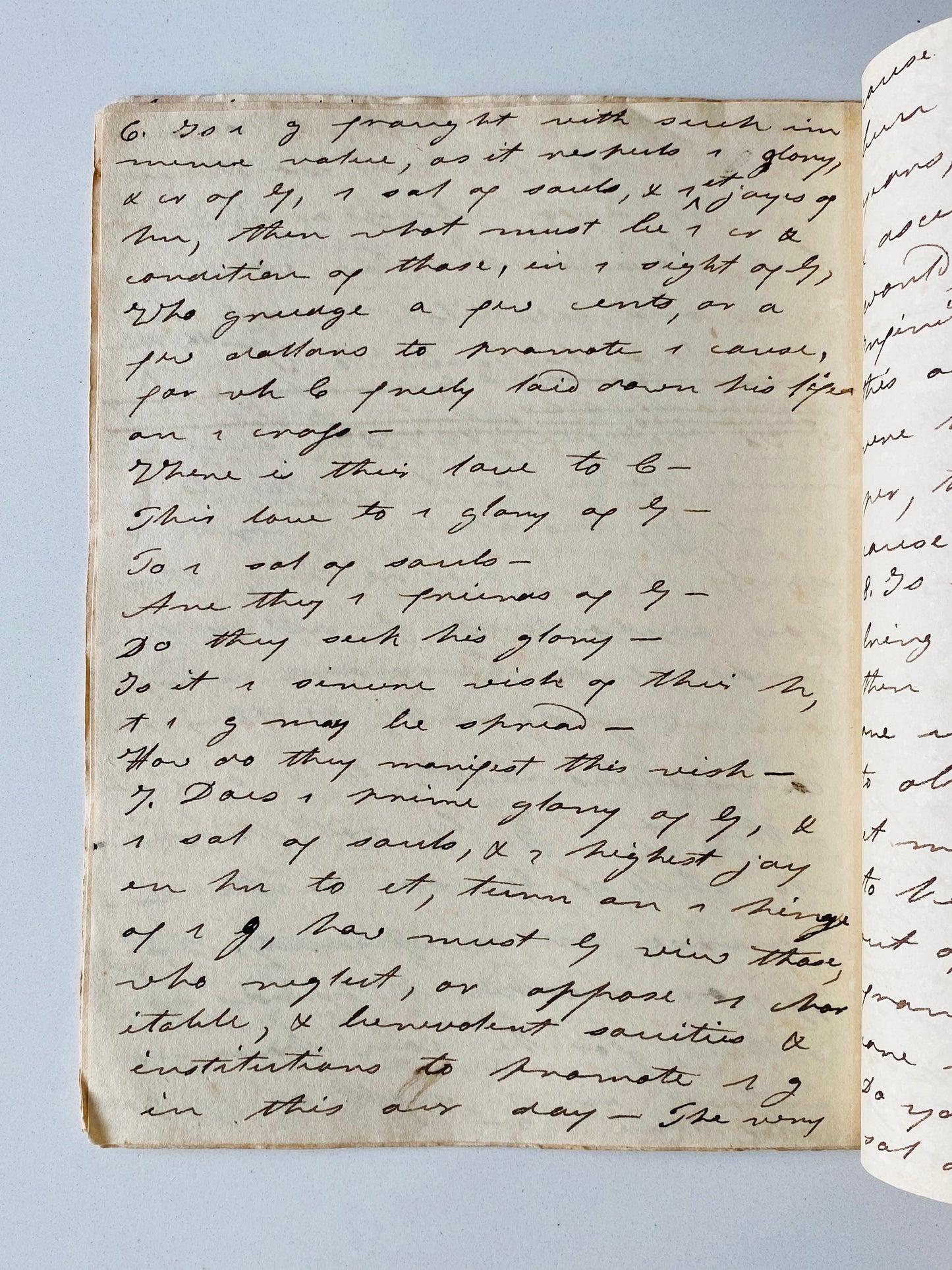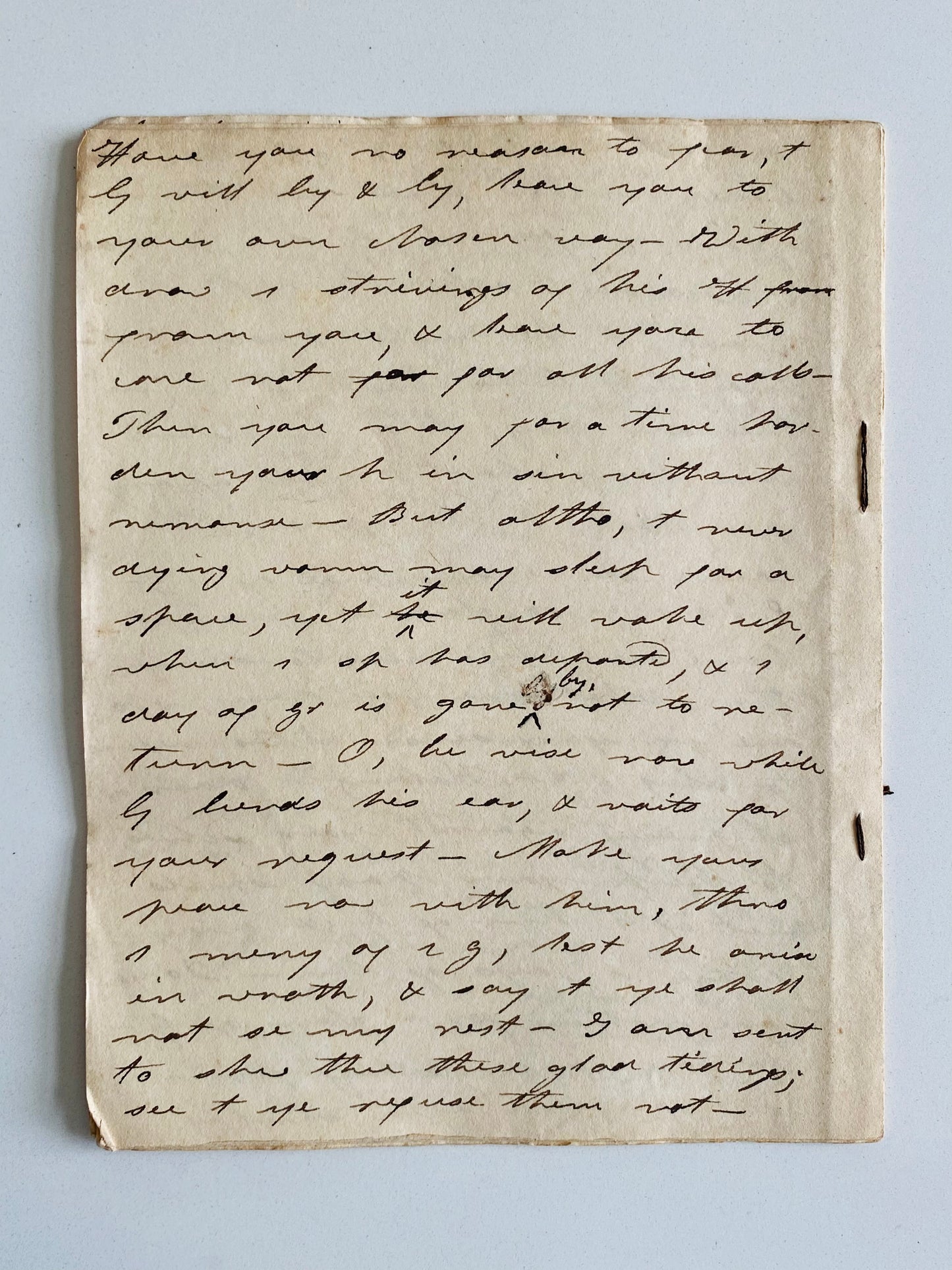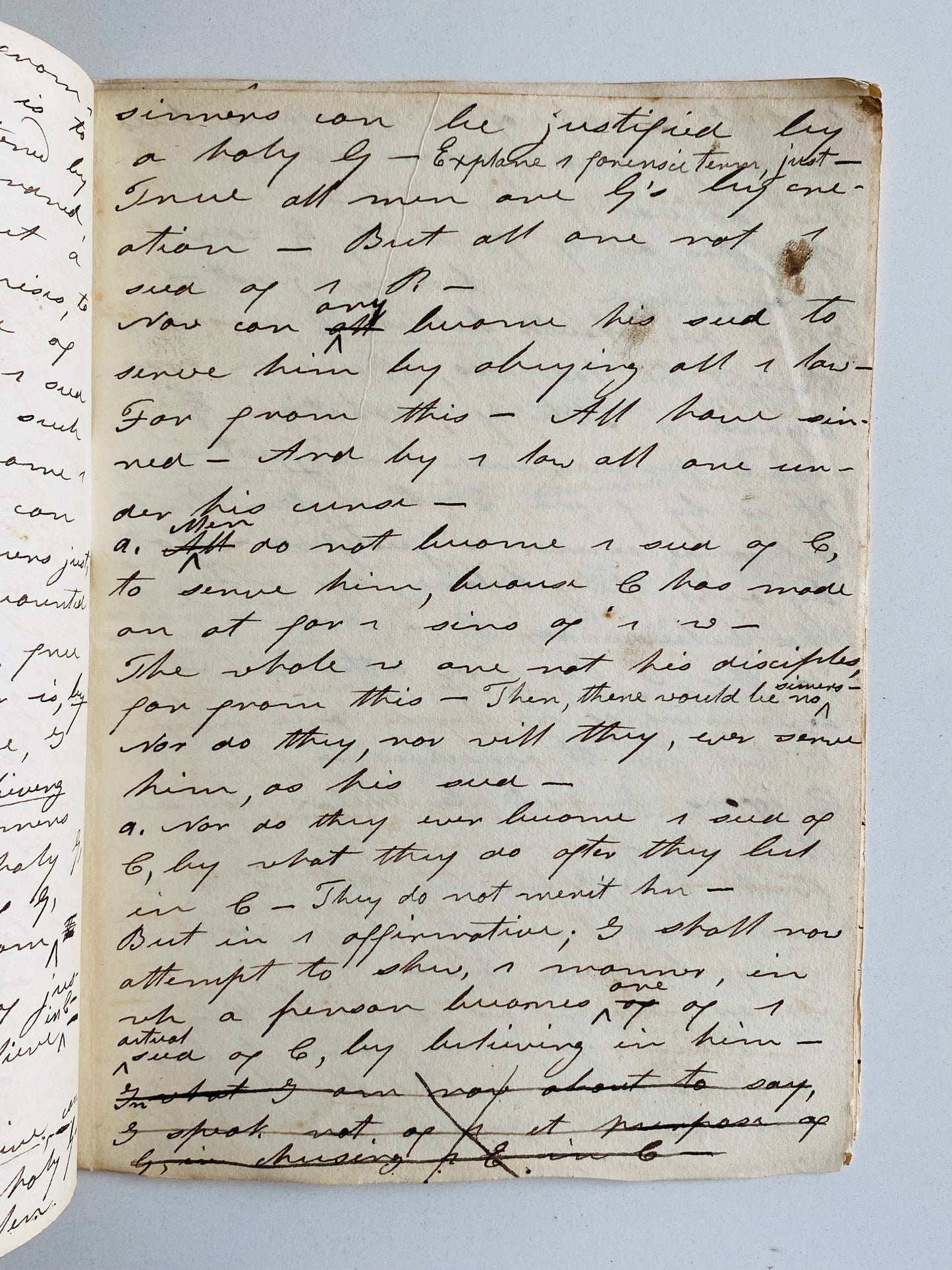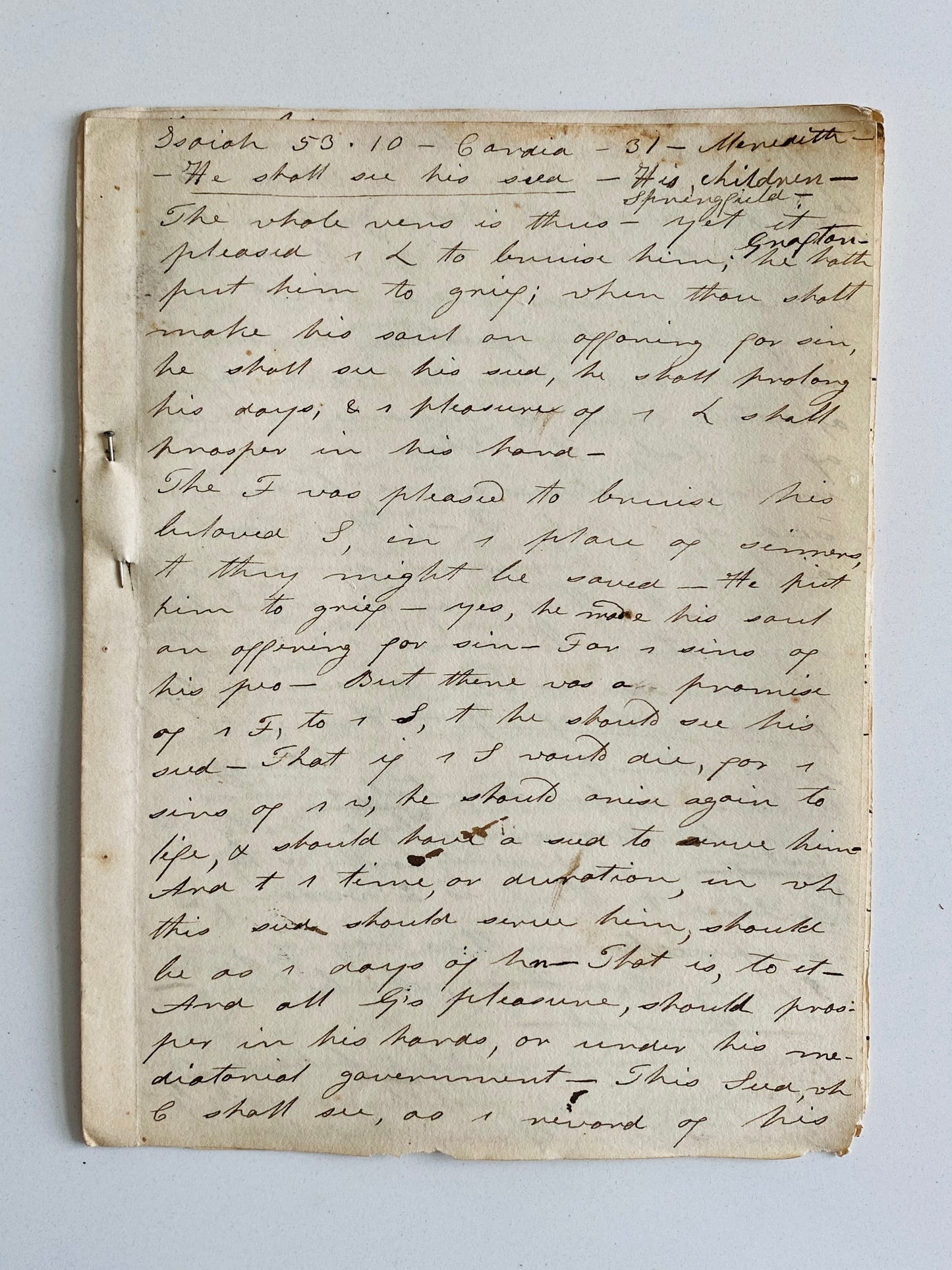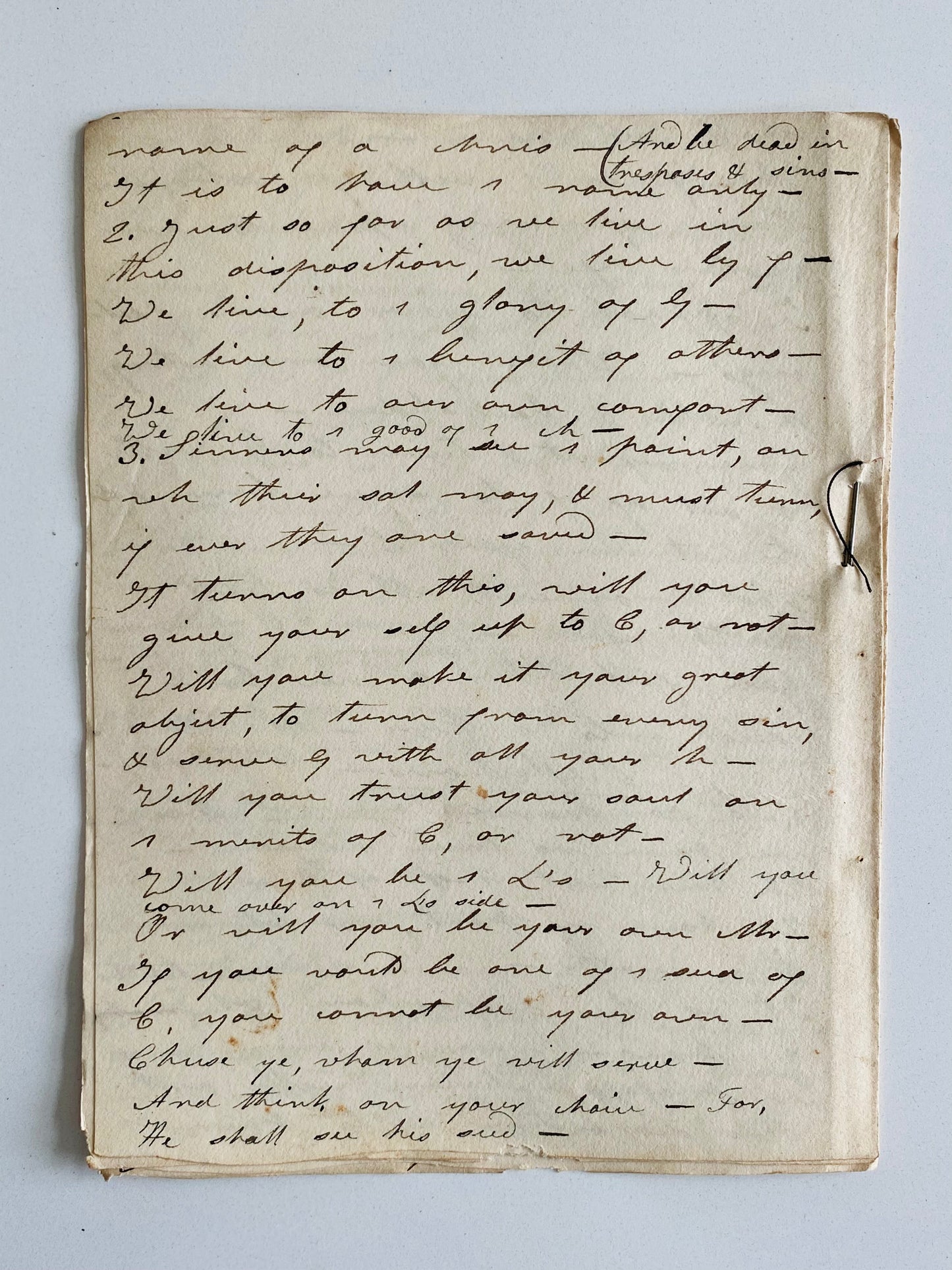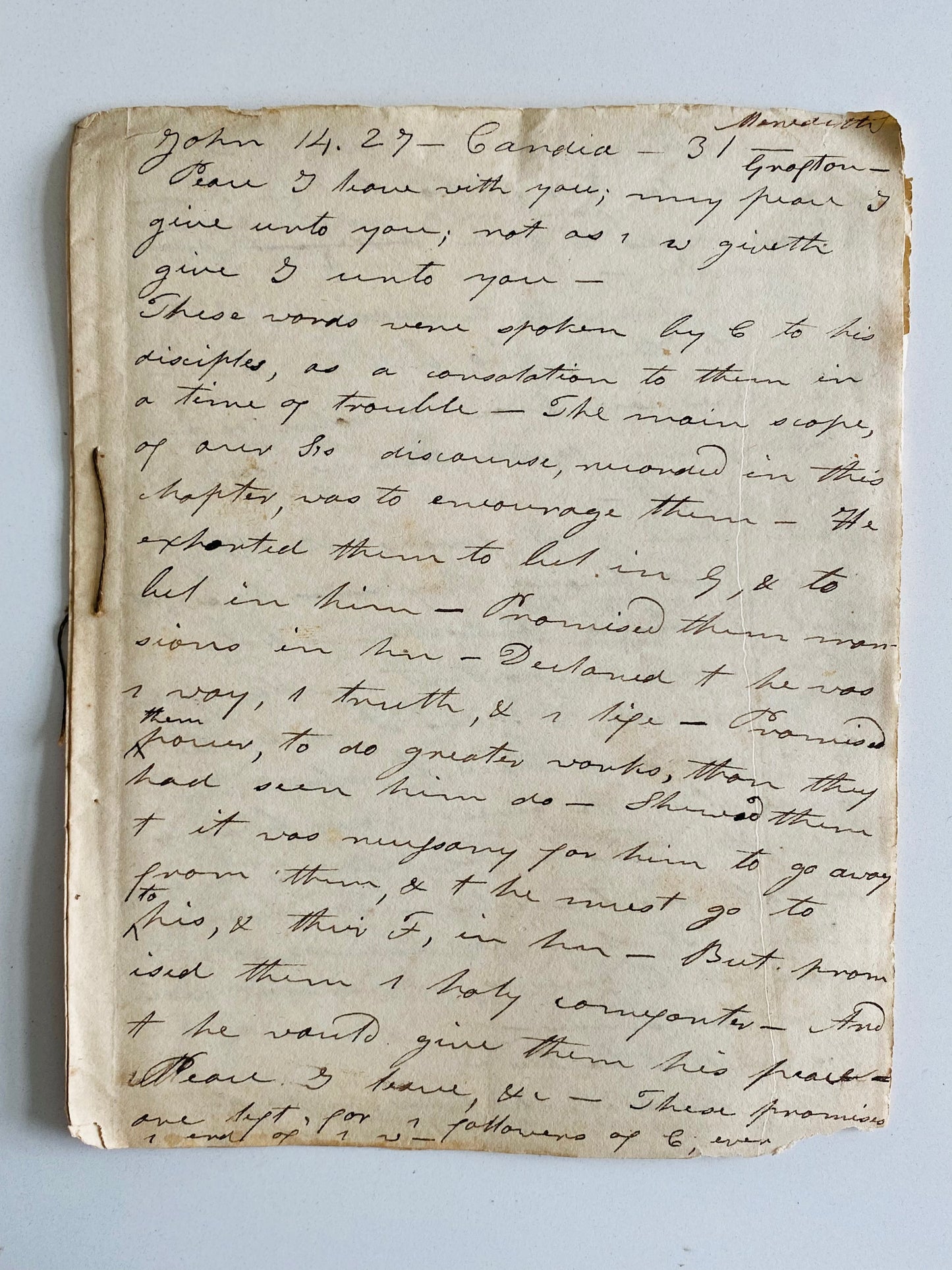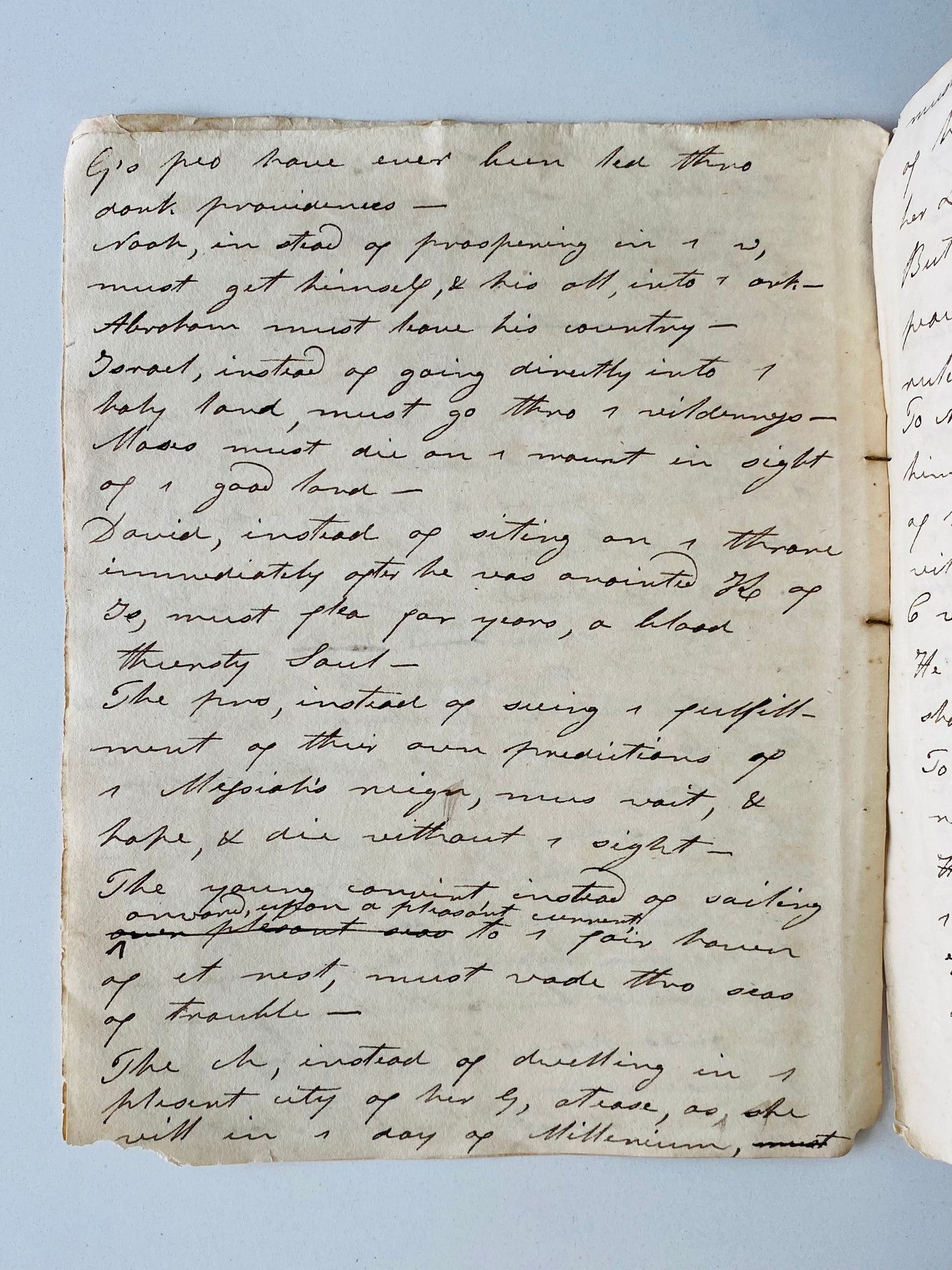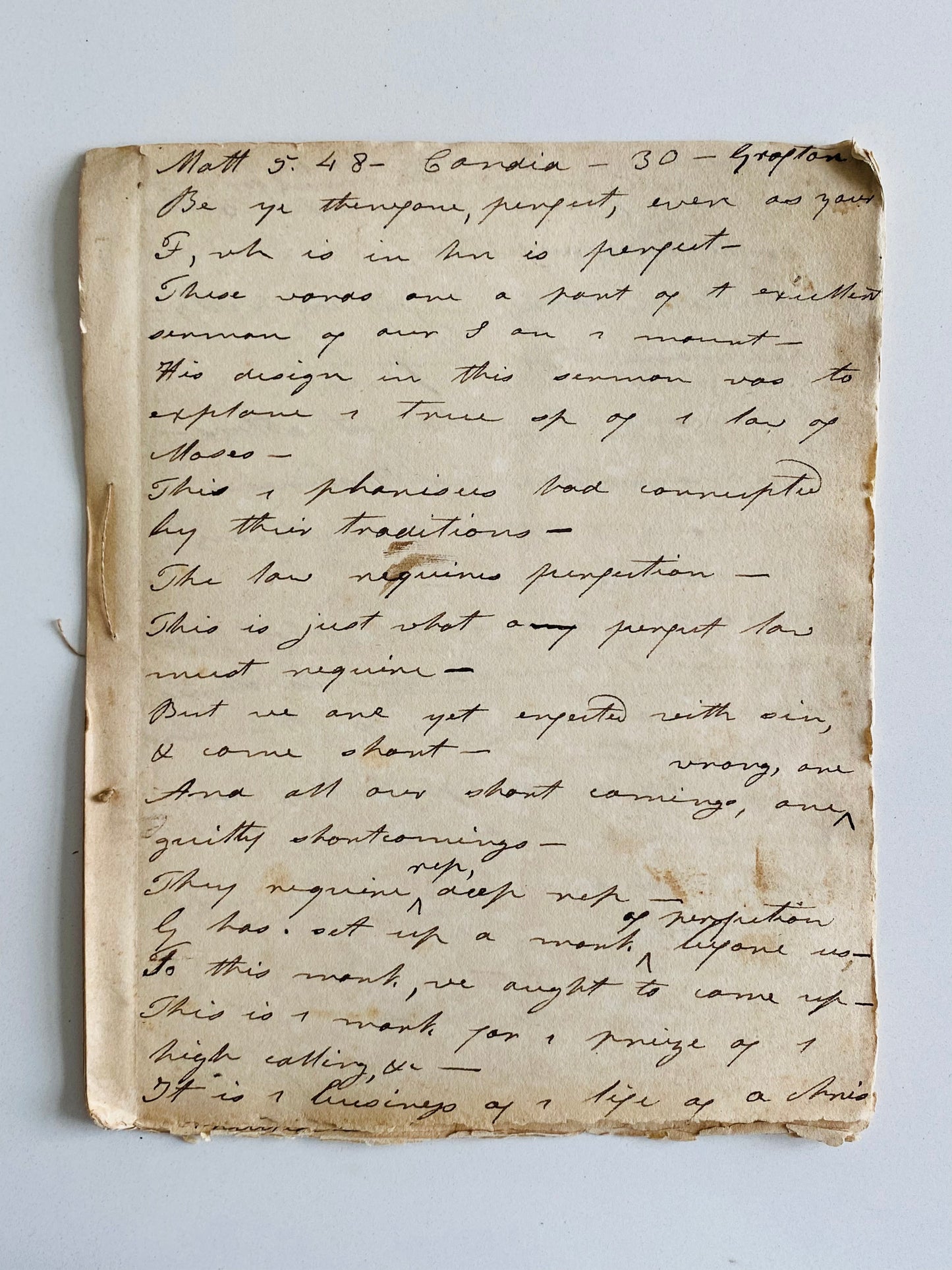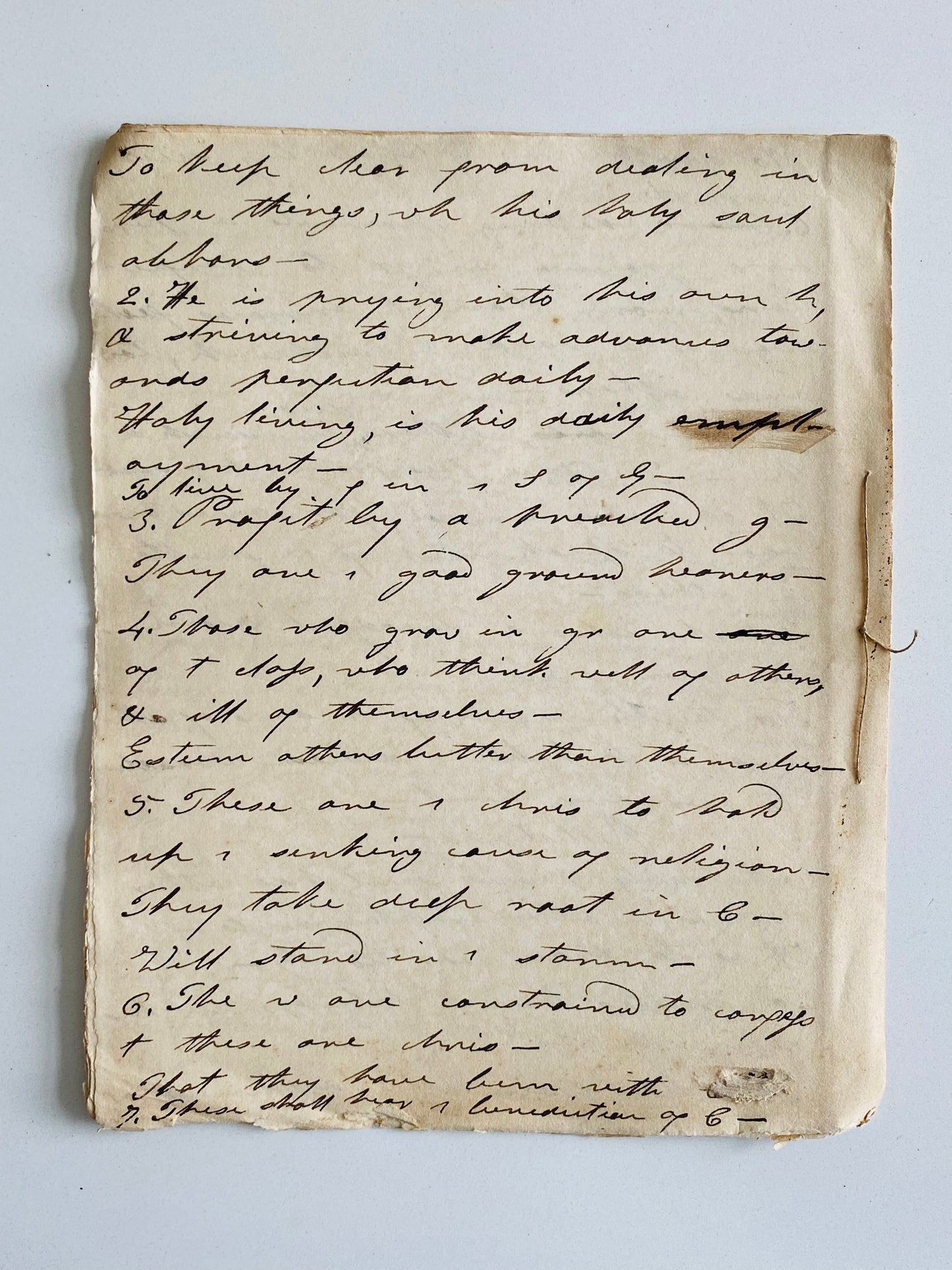Specs Fine Books
1755-1830 SAMUEL SARGENT. 2500pp Manuscript Archive of Second Great Awakening Missionary-Evangelist.
1755-1830 SAMUEL SARGENT. 2500pp Manuscript Archive of Second Great Awakening Missionary-Evangelist.
Couldn't load pickup availability
Extensive manuscript archive of sermons and theological material by Second Great Awakening Missionary-Evangelist, Reverend Samuel Sargent [1755-1830].
Born in Worcester, MA in 1755, Samuel Sargent, after graduating from Dartmouth in 1783, was ordained to the Congregational ministry at Woburn, MA in 1785. His brother, Nahum, graduated Dartmouth the same year, was ordained in 1787, but died of smallpox.
Sargent's first [and only] pastoral position was at Woburn, MA, which had been the site of significant Baptist sentiment in the 17th century. The theological disunion caused such an uproar in the small community, the local government finally rounded up all Baptists and demand they either change their views, worship in harmony with the Congregationalists, or leave town.
According to one local history, they all did just that and the entire town happily worshipped at the Congregationalist church until Samuel Sargent's arrival, making him the spoiler of the community's peace. This is, however, demonstrably untrue. Prior to Sargent's 1785 arrival, the congregation had been so divided they were without a pastor for nearly 10 years. The previous pastor, Rev. Sherman, had left the church with a rift so apparent and deep that every pastor offered the church between 1775 and 1784 declined. Sargent's nearly 14-year tenure was consequentially tumultuous. Friends of the aforementioned previous pastor, within weeks of his arrival, made a motion to be required to pay tithe-tax to the church only when they attended [which they intended to be infrequently; this wasn't Mr. Sherman after all!]. Some left almost immediately, forming a small Baptist congregation.
Before the end of the year, another similar tithe-tax petition had been placed before the Parish, some members simply stopped coming, and others continued to leave, joining the small Baptist congregation. Things only deteriorated when further motion was made that the parish tax be split with the Baptists proportionately to attendance. It was a mess. Reading the history, it seems likely that none of this was due to any fault in the young minister. They could have hired Paul or Jesus and the same thing would have happened.
By 1790, Sargent called an entire community meeting to address the disunity and disunion amongst Christians. He arrived at the meeting with a series of pastoral and theological demands he believed were placed on all Christians by Scripture and a document he would read to make himself available to correction, to publicly own any part he had played in the division, etc., He never got to read the document. Those who had left the church immediately began charging him publicly, accusing him of improprieties in the vaguest of terms. Sargent was not being paid, Rev. Thomas Greene, the Baptist minister, was wanting the Baptist's cut of the taxes, and both sued the Parish for default. Like I said, a mess. This led to his first attempt at resignation. He was persuaded to stay.
After just over five more tumultuous years, he was formally dismissed, or forced to resign, in 1798. The historical record indicates his ministry there as having been the only disruption since the Baptist incident in the late 17th century. Given his experience, that seems hard to believe. And it probably won't shock you to hear that the next pastor had a similar experience.
Sargent and his young family, mercifully released from their ecclesiastical affliction, moved to Vermont. From there he engaged as a missionary with both the Massachusetts and Connecticut Missionary Societies for the remainder of his life.
The Connecticut Missionary Society was one of the primary catalysts of the Second Great Awakening and published perhaps the most significant primary resource of local revivals of the era, The Connecticut Evangelical Magazine. The remainder of his life he served as an influential local revivalist during the Second Great Awakening era, preferring to plant and revive churches to taking a permanent charge . . . we can see why.
The present over 2,500-page archive of sermons and theological discourses, largely dating to the 1810's and 1820's, provides an important, nearly complete homiletic corpus from a "typical" Connecticut Missionary Society missionary evangelist of the Second Great Awakening, including content related to slavery, temperance, revivalism, and doctrinal and experimental themes. Irreplaceable and worthy of preservation as an intact body of work.
Locations include: Ravenswood, Springfield, Hagarstown, Stubenville, Ripley, Grafton, Corrallton, Harlem, Wills Creek, Meredith, Sandy, Dunsville, Jackson, Deersville, Fairhaven, Easton, Dartmouth, Raymond, Candia, Loudon, Londonderry, Chichester, Northwood, Deerfield, Gilmanton, Chester, Epping, Greenville, Pembroke, etc. etc.
Share
